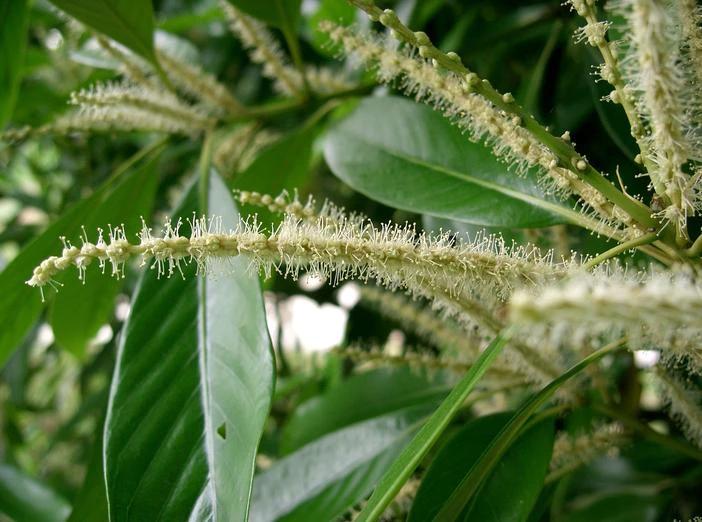Japanese Stone Oak
(Lithocarpus edulis)
Japanese Stone Oak (Lithocarpus edulis)
/
/

KENPEI
CC BY-SA 3.0
Image By:
KENPEI
Recorded By:
Copyright:
CC BY-SA 3.0
Copyright Notice:
Photo by: KENPEI | License Type: CC BY-SA 3.0 | License URL: http://creativecommons.org/licenses/by-sa/3.0/ | Uploader: KENPEI | Publisher: Wikipedia Commons


























Estimated Native Range
Climate Requirements for Conroe, Texas
| This Plant | Your Site | Plant Suitability for Your Location | ||
|---|---|---|---|---|
| • Precipitation | 29" - 140" | 47" | Aquatic | Aquatic |
| • High Temp. | 64°F - 91°F | 94°F | Your summers may be too hot for this plant. | Too hot |
| • Low Temp. | 22°F - 59°F | 39°F | Your winter temperatures are normal for this plant | Excellent |
This plant should grow well at your location with about N inches per year (Y minutes per month) of irrigation.
Summary
Lithocarpus edulis, commonly known as Japanese Stone Oak, is an evergreen tree that can grow up to 15 meters tall. It is native to the warm temperate forests of Japan, where it thrives in the understory and on mountain slopes. The tree is characterized by its dense, rounded crown and smooth, gray bark. The leaves are leathery, with a glossy green surface and a paler underside. Japanese Stone Oak produces small, inconspicuous yellowish-green flowers in the spring, followed by acorn-like nuts that are edible but bitter due to their tannin content. Soaking the nuts in water can remove the tannins, making them more palatable.
Japanese Stone Oak is valued for its ornamental qualities, including its attractive foliage and compact growth habit. It is often used in urban landscapes, parks, and gardens. The tree is relatively low-maintenance, requiring medium amounts of water and adaptable to a range of soil drainage conditions, from slow to fast. It prefers full sun but can tolerate partial shade. While it is not commonly afflicted by serious diseases or pests, it can suffer from root rot if planted in poorly drained soils. Its nuts are sometimes harvested for culinary use after tannin removal.CC BY-SA 4.0
Japanese Stone Oak is valued for its ornamental qualities, including its attractive foliage and compact growth habit. It is often used in urban landscapes, parks, and gardens. The tree is relatively low-maintenance, requiring medium amounts of water and adaptable to a range of soil drainage conditions, from slow to fast. It prefers full sun but can tolerate partial shade. While it is not commonly afflicted by serious diseases or pests, it can suffer from root rot if planted in poorly drained soils. Its nuts are sometimes harvested for culinary use after tannin removal.CC BY-SA 4.0
Plant Description
- Plant Type: Tree
- Height: 20-30 feet
- Width: 15-25 feet
- Growth Rate: Moderate
- Flower Color: N/A
- Flowering Season: Spring, Summer
- Leaf Retention: Evergreen
Growth Requirements
- Sun: Full Sun
- Water: Medium
- Drainage: Slow, Medium, Fast
Common Uses
Edible*Disclaimer: Easyscape's listed plant edibility is for informational use. Always verify the safety and proper identification of any plant before consumption., Hedges, Low Maintenance
Natural Habitat
Warm temperate forests of Japan, thriving in the understory and on mountain slopes
Other Names
Common Names:
Scientific Names: Lithocarpus edulis, Pasania edulis, Quercus glabra var. micrococca, Quercus glabra var. sublepidota, Quercus edulis, Lithocarpus sublepidotus, Quercus glabra, Synaedrys edulis
GBIF Accepted Name: Lithocarpus edulis (Makino) Nakai